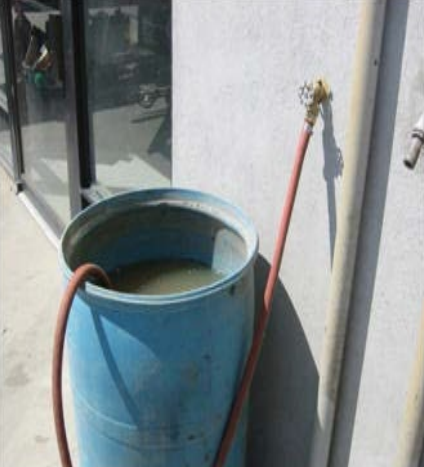Spot The Safety Violation: Would You Drink This Water?

It’s important for workers to stay hydrated in the hot weather but should their drinking water look like this’

Heat stress is a serious safety hazard for many workers in the summer (and for others, year-round). In the heat and humidity, the body sweats to cool itself, which can use up a significant amount of fluid. This fluid must be replaced continuously. If it isn’t regularly replaced, workers can become dehydrated and thus more vulnerable to heat-related illnesses, such as heat exhaustion and heat stroke.
So yes, drinking fluids to stay hydrated is one way workers can keep from getting overheated. But the water in this picture from Cal/OSHA doesn’t look particularly clean or safe to drink.
It’s critical for employers to ensure that workers have cool water available on the worksite if heat stress is a safety hazard. And this water must be fit to drink. For example, water containers shouldn’t be filled from non-potable water sources, such as irrigation wells or sprinkler or firefighting systems. And you should take steps to prevent contamination of the drinking water you provide.
7 Hydration Tips
Here are seven hydration tips for workers who work in hot environments:
1. Drink water (without added salt) before as well as during and after the workday.
2. Drink about two glasses or « litre of water before starting work.
3. During the workday, drink one glass about every 20 minutes.
4. If the environment is very hot or humid or if you sweat profusely, drink even more water.
5. Don’t wait until you’re thirsty to replace your fluids.
6. In addition to water, you can also drink fruit juice or sports drinks’but nothing containing alcohol or caffeine, which increase dehydration.
7. Eat salty foods to replace salt lost through sweat but don’t use salt tablets.
10 Ways to Protect Workers from Heat Stress
The OHS laws in every jurisdiction either directly or indirectly require employers to protect workers from heat stress. Here are some basics safety measures you can include in a heat stress plan to protect your workers if they’re exposed to this safety hazard:
1. Train workers on the dangers of heat illness and how to recognize the signs and symptoms of the various types of heat stress (For example, post this infographic on summer health and safety hazards in the workplace.);
2. As mentioned above, provide workers with cool, fresh water to drink;
3. Give workers tools such as hoists and lifts to make work less strenuous;
4. Provide a shaded area for workers to cool down in’but not one located below heavy machinery;
5. Allow workers to take more frequent breaks;
6. Give workers time to get acclimated to the heat;
7. Try to limit outside or especially rigorous work to the cooler times of day, such as early morning and evening;
8. Vent heat or steam from the workplace or cool it with air conditioning;
9. Provide fans for better air circulation; and
10. Make sure workers wear appropriate clothing for the conditions, such as lighter colours, lighter weight, short sleeves, etc.
Heat Stress Resources
At OHSInsider.com, go to the Heat Stress Compliance Centre for information and tools on heat stress, including:
- Your legal obligation to protect workers from heat stress
- A model humidex-based heat stress response plan
- A heat stress awareness tool
- The role of heat stress monitors
- A hand out for workers on the danger signs of heat illnesses
- An infographic on summer health and safety hazards
- Several videos on heat stress.